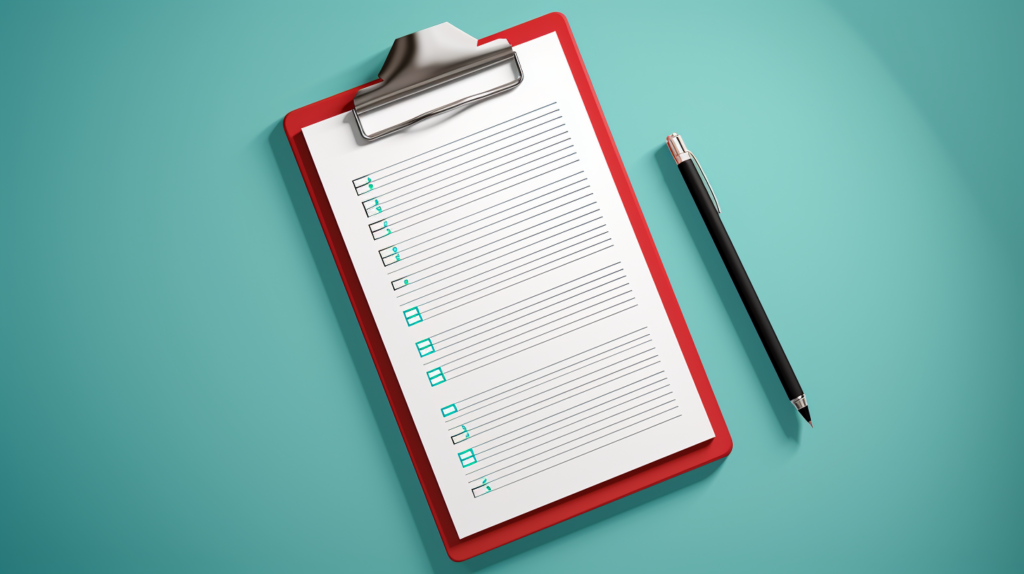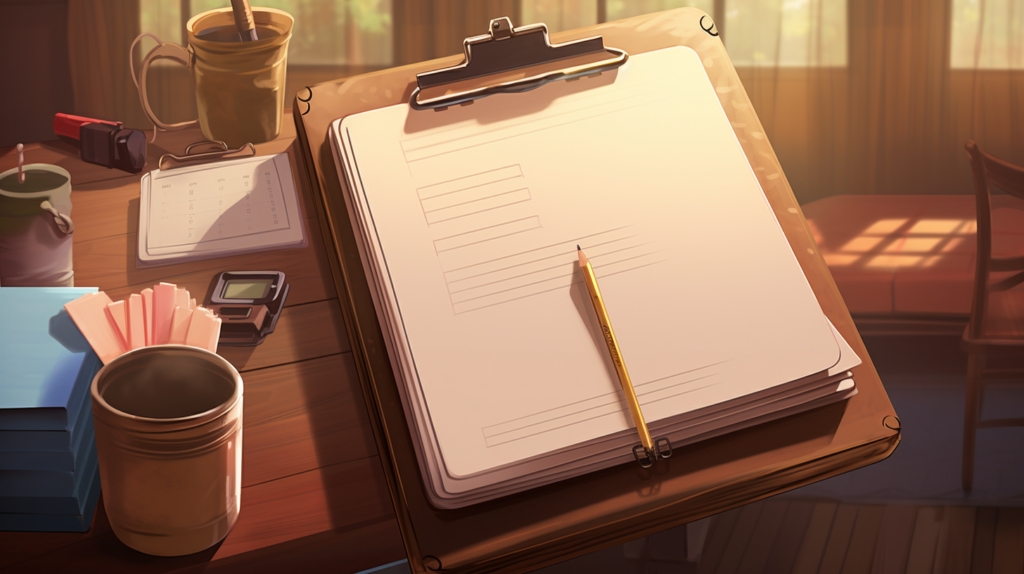Life Stressor Checklist: The Ultimate Guide to Overcome Stress
Greetings! The key aim of our dialogue today is to comprehend and tackle life’s hurdles with the help of a life stressor checklist. This potent instrument enables us to examine tough life incidents and identify beneficial resolutions.
Understanding what stresses us out is crucial to managing it. I’ll break down a tool called the Life Stressors Checklist (LSC-R) for you, explain some common triggers, and show you how to use it.
We’ll even explore some free resources. Trust me, it’s simpler than it sounds. Ready to uncover what’s really stressing you out? Let’s dive in!
Key Takeaways
- These are pervasive in daily lives and can significantly impact physical and mental health.
- Identifying them is crucial for effective stress management.
- Common ones in daily life include work overload, financial struggles, personal relationships, health issues, and lack of time.
- The Life Stressors Checklist-Revised LSC-R can be used to assess the severity of trauma and resilience in resilience, identify traumatic events, and evaluate stress levels.
Understanding The Concept of Life Stressors

As I delve into this concept, I realize how pervasive they are in our daily lives.
Seeing how these can impact our mental and physical health is fascinating and somewhat daunting. Now, I’m on a mission to identify these and understand their role better.
Defining What is a Stressor?
I’m trying to fully grasp what it is and how it affects our daily lives. As I’ve come to understand, any life event or situation triggers stress. These can range from minor daily hassles to major life events experienced.
To help clarify, here’s a checklist of examples that might be considered one:
- Losing a job or starting a new one
- Moving to a new home
- Going through a divorce or a breakup
- Dealing with serious illness or death of a loved one
- Experiencing financial difficulties
The Impact of Stress on Mental and Physical Health
Acknowledging the toll that constant stress takes on our mental and physical health is crucial.
Stressful life events may lead to psychological stress, which can cause various issues, from insomnia to depression. The impact of stress on mental and physical health isn’t to be underestimated.
It’s important to remember that stress isn’t just a state of mind. It has concrete physical effects, too, potentially leading to problems like heart disease and high blood pressure. Traumatic stress can even have long-lasting impacts, altering our brain structure and function.
Understanding the harmful effects of stress can drive us to manage it effectively and prioritize our overall well-being. It’s an essential step towards a healthier, happier life.
Recognizing Potential Stressors in Your Day-to-Day Life
In my daily routine, I need to pinpoint the elements causing me undue tension and anxiety. Recognizing these in my day-to-day life can help me manage the high stress levels that specific life events can cause.
I’ve found that a checklist is a useful tool for identifying and managing these. Here are the top five:
- Overloaded work schedule
- Financial struggles
- Personal relationships
- Health issues
- Lack of personal time
Deconstructing the Life Stressors Checklist (LSC-R)

Now that we’ve grasped its concept let’s delve deeper into a specific tool used to evaluate them—the Life Stressors Checklist-Revised (LSC-R).
I’ll guide you through its origins, utility, and how the checklist assesses stressors and trauma. Additionally, we’ll explore how to use it as a self-assessment tool.
The Origins and Utility of the LSC-R
I’ve always found the LSC-R fascinating because it originated as a tool for assessing stress levels in individuals, and it’s still widely used today for its accuracy and reliability.
This particular tool measures traumatic events and other stressful life events. It’s a key instrument in the assessment of post-traumatic stress disorder.
Here are a few key points about it:
- It was designed to evaluate exposure to traumatic events over a lifetime.
- It helps to identify both single and multiple traumatic events.
- It’s often used in clinical settings for PTSD diagnosis.
- It’s been validated in various populations, showcasing its universal applicability.
- Its creation was based on the psychometric properties of life stressors and trauma.
In short, it is an invaluable tool in mental health.
How the LSC-R Evaluates Life Stressors and Trauma
It’s really interesting how it scrutinizes trauma and other stressful events in an individual’s life. The total number of stressful trauma exposure is strongly associated with PTSD.
More stressful exposures can lead to physical and mental problems and changes in body mass index. This tool evaluates the impact of various incidents on an individual’s well-being.
Assessing a wide range of traumatic experiences offers a comprehensive overview of triggers one may encounter.
It isn’t just a life events checklist; it’s an instrument with strong psychometric properties. It’s designed to measure both the occurrence and impact of potentially traumatic events.
In essence, it allows me to understand the depth and breadth of life’s challenges and their effects on me. It’s an invaluable tool in my journey to comprehend and address personal triggers.
Employing LSC-R as a Self-Assessment Tool
Employing this tool as a self-assessment measure, I can delve deeper into understanding the nature and impact of my past traumatic experiences. It can be used in various ways, allowing me to objectively evaluate my past and present triggers.
As a self-report measure that assesses traumatic or stressful life events, it provides insight into:
- How past experiences affect my present behavior, like child and adolescent abuse and neglect
- The severity of the trauma I’ve experienced
- How I’m coping with it
- My resilience in the face of adversity
- The potential need for professional help
This self-assessment tool is, in essence, a mirror reflecting the reality of my life experiences. Using it, I can make sense of my past and better navigate toward a healthier future.
Exploring Common Life Events in Stressor Checklist

As I delve into the common life events in the Checklist, I’m particularly drawn to three main areas. They’re emotional turmoil, occupational, and personal factors.
Within these realms, I find the most relevant stressors, such as relationship strains, job insecurity, and financial pressure.
Emotional Turmoil: Relationship Strains and Bereavement
I’ve noticed that relationship strains and grief can cause significant emotional turmoil in my life. They’re major stressful events that can throw me into a sea of sadness, anxiety, and confusion. They’re part of a checklist I never wanted to tick off but had to deal with.
- Relationship strains: They bring a lot of emotional turbulence. Misunderstandings, betrayals, or breakups can send me spiraling into emotional chaos.
- Bereavement: Losing a loved one is heart-wrenching, or the death of a relative. The grief and loneliness are overwhelming.
- Major stressful events: These can range from job loss to moving to a new city. They disrupt my normal life flow.
- Emotional turmoil: It’s a tough phase. I feel a whirlwind of negative emotions.
- Checklist: It’s a list I wish to avoid, but life has other plans.
These experiences, albeit challenging, shaped me into a stronger person.
Occupational Stressors: Job Insecurity and Workplace Anxiety
Job insecurity and workplace anxiety are occupational triggers that really weigh me down. These issues aren’t just abstract concepts; they’re realities that significantly affect my levels of stress. It’s like walking on a tightrope, never quite sure when the rope might snap.
I’ve used the perceived stress scale before, and an online survey was conducted to evaluate my anxiety or depressive symptoms. The results were eye-opening, revealing the impact of these on my mental health.
To help ease my anxiety, I’ve started seeking resources and strategies. I’m learning to manage workplace stress and find stability amidst job insecurity. I’m a work in progress, but each step forward is a victory against the occupational triggers that threaten my well-being.
Personal Factors: Health Concerns and Financial Pressure
On top of job-related worries, I’m also grappling with personal issues like health concerns and financial pressure. This is common as these are relevant triggers that contribute to the overall life stress I’m experiencing.
- I’m dealing with chronic health issues that require regular medical attention and medication.
- The financial pressure of meeting daily expenses and paying off debts is overwhelming.
The perceived stress from these personal factors is so immense that it often paralyzes my decision-making skills. My health concerns disrupt my normal routine, adding to life stress. The constant worry about the future, especially regarding health and finance, is weighing me down.
These issues, both health and financial, aren’t just personal problems. They’re battles we all fight in our everyday lives.
Questionnaire: Procedure for Completing Your Checklist

Let’s dive into how you can complete your own checklist. I’ll walk you through the process, explaining each step so you can do it accurately.
After that, we’ll look at how to interpret your results and identify coping strategies for each trigger.
Instructions for Filling Out the Life Stressor Questionnaire
I’m here to guide you through filling out the Questionnaire. The questions in this questionnaire are asked to identify life events and their impact that may have resulted in stress or even PTSD. It’s simple and straightforward, but I’ll walk you through it to ensure you understand.
Here are the instructions for filling it out:
- Read each question carefully. They’re designed to capture a wide range of life events.
- Answer honestly. There’s no right or wrong answer.
- If a question brings up difficult emotions, taking a break is okay.
- Remember, the aim is to identify it, not to cause additional stress.
- Once you’re done, review your answers to ensure they accurately represent your experiences.
Interpretation of Your Results: What They Mean
Now, let’s dive into the interpretation of your results from the checklist. This crucial step helps you understand what the presence of particular traumatic life events means for you. The table below offers a basic guide for assessing life events’ impact:
| Score Range | Interpretation |
|---|---|
| 0-10 | Low level of life stress |
| 11-20 | Moderate level of life stress |
| 21-30 | High level of life stress |
| 31 and above | Very high level of life stress |
Please remember, that this interpretation is a general guide. Everyone’s reaction to stress is unique. If you’re feeling overwhelmed by the impact of events, it’s important to seek mental health professionals.
Understanding your stress intensity is the first step towards managing it effectively.
Taking Action: Identifying Coping Strategies for Each Stressor
After identifying my stress levels, it’s time to pinpoint coping strategies for my specific challenges. This is crucial in my quest to reduce stress and manage specific life situations contributing to it.
These may include types of stressful scenarios or potentially traumatic events that have left me feeling overwhelmed. Here are some strategies I’m considering:
- Practicing mindfulness to stay present and avoid ruminating on past events
- Incorporating regular exercise to boost my mood
- Talking to a therapist for professional advice
- Building a strong support network for emotional backup
- Prioritizing self-care to maintain my mental health
Taking action: identifying coping strategies for each stressor is a proactive approach. It’s about not just surviving but thriving amidst life’s challenges.
Accessible Resources: Free Life Stressors Checklist PDFs and Tools

Now that we’ve covered completing a checklist, let’s delve into where you can find these tools for free.
There’s a wealth of online resources, including PDFs, that you can download and print at your convenience.
Additionally, some fantastic app-based tools can assist with ongoing tracking and management of your triggers.
Where to Find Free PDFs Online
I’ve found several websites where you can download free checklist PDFs. These resources are invaluable in helping you identify and manage these in your life.
Here are some places where you can find free checklist PDFs online:
- American Psychological Association: They offer a free comprehensive PDF version of the Lifetime Stressor Checklist.
- Mind Tools: This site has a range of stress management resources, including a free checklist.
- HelpGuide: You’ll find a free, downloadable checklist here.
- Verywell Mind: This site offers a detailed checklist.
- Psych Central: They provide a free, printable checklist in PDF format.
These resources can empower you to tackle your stress head-on. Knowledge is power; understanding your triggers is the first step towards a stress-free life.
Downloadable And Printable Stressor Checklist Templates
There’s an abundance of downloadable and printable templates online that can help you keep track of what’s causing tension in your daily routine. These checklist templates are easily accessible and user-friendly, providing a list of common triggers.
The beauty of these downloadable and printable checklist templates is that they systematically measure stressful scenarios. Respondents are asked to provide information about their experiences, enabling a personalized strategy to manage stress.
Having these resources at your fingertips allows you to gain better insight, helping you to make necessary adjustments.
App-based Tools for Ongoing Stressor Tracking and Management
In addition to printable templates, I’m finding that app-based tools provide a handy and interactive way for ongoing tracking and managing my daily tensions. These tools not only help me maintain a checklist but also help me understand the number and impact of stressful events I encounter daily.
Here’s how these app-based tools work for ongoing tracking and management:
- Respondents are asked to complete a stressful life events screening questionnaire daily.
- The apps measure the severity of each.
- They provide coping strategies based on individual stress intensity.
- They track your progress over time.
- They offer reminders to check in and manage stress throughout the day.
I’ve found these tools to be extremely beneficial in understanding how they affect me.
Frequently Asked Questions
How Can I Manage the Stress After Identifying the Life Stressors Through This Checklist?
After pinpointing my stress triggers, I’m focusing on stress management techniques. I’m incorporating regular exercise, healthy eating, and mindfulness practices like meditation into my routine. I’ve also started seeing a therapist for professional guidance.
Are There Any Specific Age Groups More Prone to Certain Life Stressors?
Yes, certain age groups are more susceptible to specific triggers. For example, young adults often face career or financial stress, while older adults might worry about health issues or retirement.
Does the Life Stressors Checklist Take Into Account Cultural or Geographic Differences?
Yes, it does. I’m certain that a comprehensive checklist would consider cultural and geographic differences. People’s triggers can greatly differ based on their cultural background and the environment they live in.
Can the Life Stressors Checklist be a Tool in Therapy or Counseling?
Absolutely, it can serve as an effective tool in therapy or counseling. It helps identify what a person is dealing with, giving both the client and therapist a starting point to address and manage these issues.
Are There Any Specific Strategies Recommended to Handle Life Stressors That Score High on the Checklist?
Absolutely, there are strategies for these. I’d recommend mindfulness exercises, cognitive-behavioral therapies, and lifestyle changes like regular exercise, a balanced diet, and adequate sleep. It’s all about managing stress effectively.
Conclusion
In wrapping up, understanding life stressors and using a checklist can help us manage our stress levels.
With the LSC-R, we can identify common life events that trigger stress, effectively deal with them, and maintain our mental well-being.
Remember, stress is a part of life, but doesn’t have to overpower us. Using these free resources, we can take control and navigate life’s challenges more easily and resiliently.




